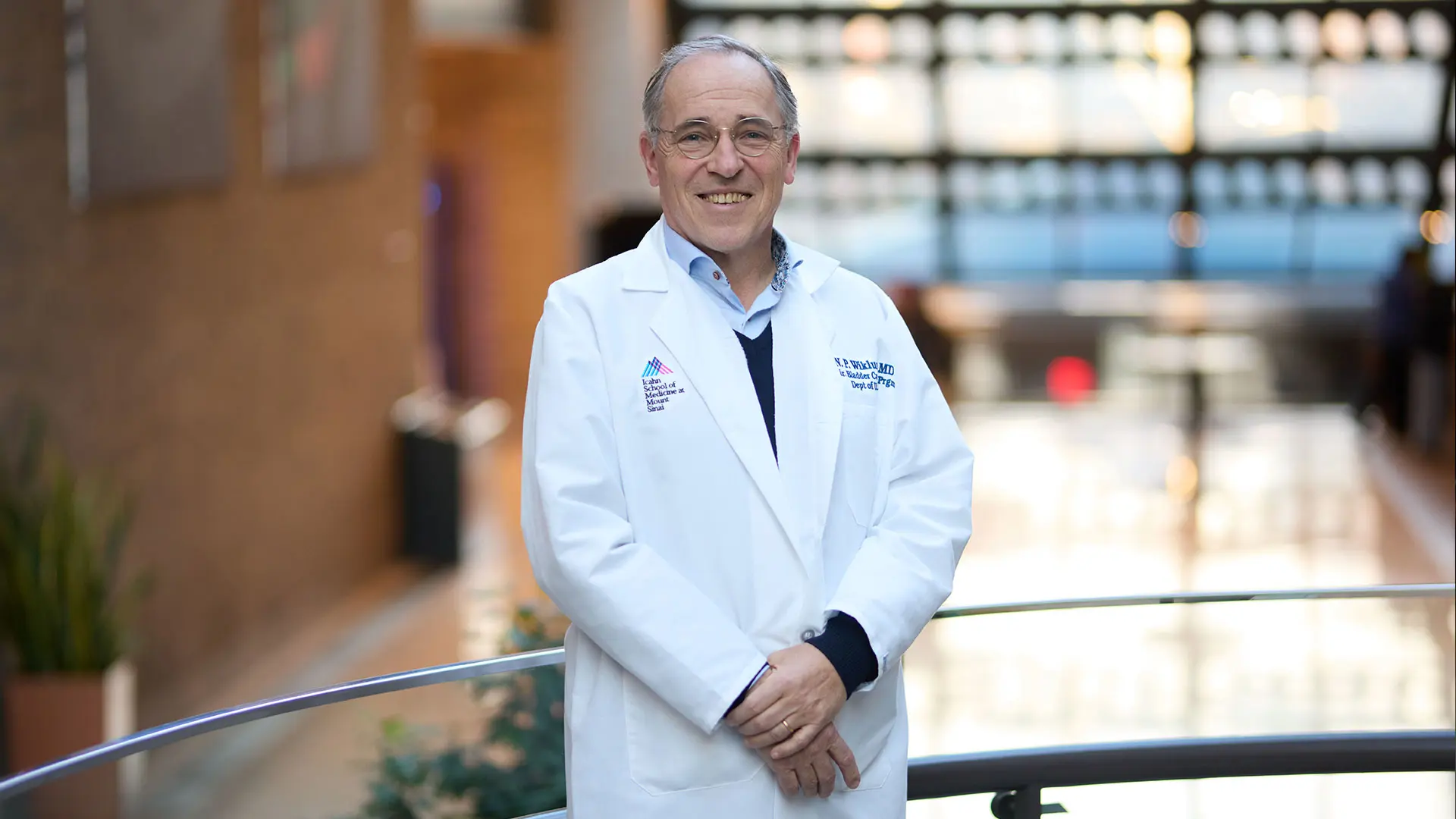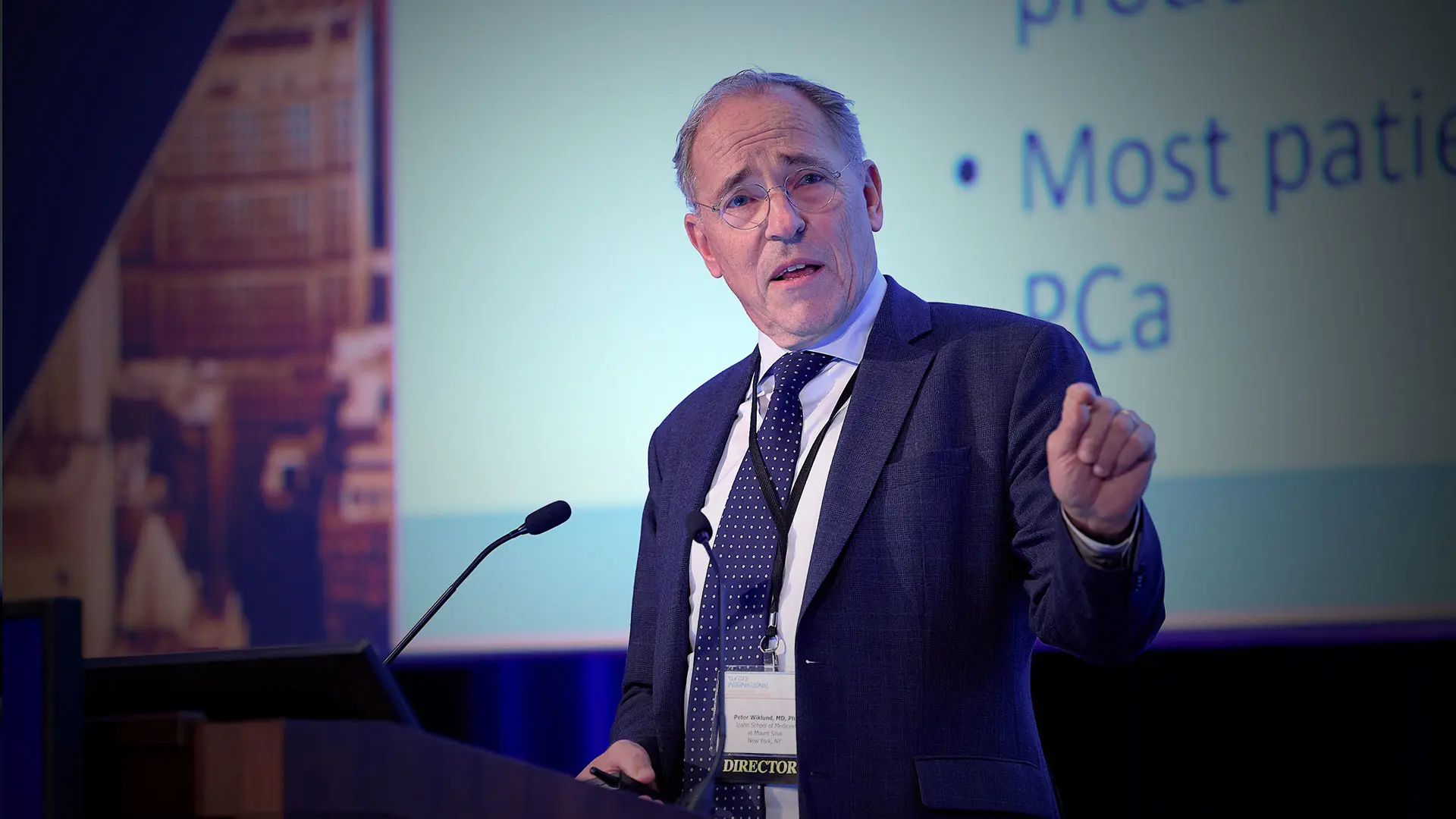Mount Sinai is pioneering an innovative technique for performing radical cystectomy by using a single-port robotic approach that would expand the pool of patients to include those previously excluded because of prior procedures that left scarring in the abdomen.
The novel technique was developed by a pioneer in the field, Peter Wiklund, MD, PhD, Co-Director of the Bladder Cancer Program at the Mount Sinai Health System and a world-renowned surgeon who pioneered robot-assisted cystectomy. He reports excellent results when the extraperitoneal surgery is used on carefully screened patients with bladder cancer.
“By performing this surgery outside the abdominal cavity, we’re able to avoid complications, achieve better outcomes in complex cases, and ensure greater safety for patients with less post-operative pain and quicker recovery,”says Dr. Wiklund, who brought the surgery to Mount Sinai in 2018 from the Karolinska Institutet in Sweden, where he was Chair of Urology, Molecular Medicine, and Surgery.

Peter Wiklund, MD, PhD, Professor of Urology in the Department of Urology at the Icahn School of Medicine at Mount Sinai and Director of the Bladder Cancer Program at the Mount Sinai Health System
While most of their robot-assisted cystectomies are still multi-port, Dr. Wiklund and his team are performing about three single-port robotic cystectomies each month on patients who would face a higher risk from surgery that penetrates the peritoneum due to adhesion within the abdomen from previous radiation therapy or genitourinary procedures. By remaining outside the peritoneum, the surgery becomes less invasive, and the chance of injuring delicate intraperitoneal organs is greatly reduced. The surgery also tends to be better suited to patients with comorbidities.
Single-port cystectomy was introduced in the United States about five years ago but did not catch on right away because of its perceived complexity and learning curve for surgeons. Dr. Wiklund, who has performed more than 3,000 robotic procedures over his career, drew on that deep experience to streamline the surgery using the Da Vinci SP system and instruments optimized for single-port entry and advanced vision capabilities.
Through a two-and-a-half centimeter hole, he can introduce a camera and three full-wristed, elbowed instruments that allow him to achieve distal triangulation inside the body.
“Previously, the surgery required multiple ports, each providing an entry point for instruments,” he says. “The newest upgrade greatly simplifies the procedure and gives the surgeon the flexibility to do reconstructive procedures not possible with multi-port robotic surgery.”
To optimize outcomes, the Department of Urology at Mount Sinai uses a non-opioid protocol for patients undergoing robot-assisted radical cystectomy. Research has shown that this approach enables an earlier return to regular diet, shorter hospital stays, and no difference in pain scores among patients.
Post-surgery, patients are followed closely, beginning with a consultation at one week to discuss pathology results and recovery. They also receive a personalized, post-operative treatment plan, and are connected with bladder cancer support groups to help them better manage the long-term healing process.
Dr. Wiklund, who gives lectures and training sessions around the world in robotic surgery, says the single-port robot-assisted technique for radical cystectomy is still in its early stages and that a much larger caseload for the relatively rare procedure must be amassed along with data before he and others can conduct a comprehensive clinical study of its effectiveness.
“Robot-assisted surgery with a single incision represents a fundamental change in how we do urologic surgery going forward, and there will definitely be growing interest in our field,” he says. “I’m still learning and thinking about ways to do it better and, just as important, how to apply the technique to many more procedures we now do where the patient could clearly benefit.”
